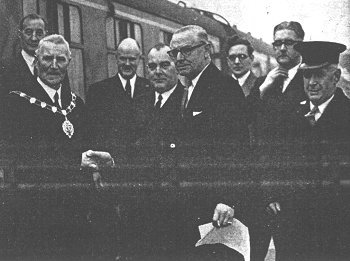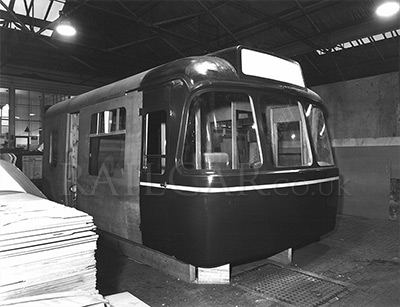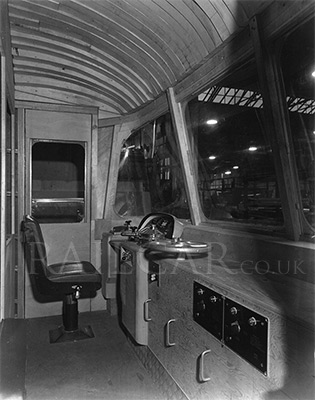Class 124 Swindon Trans-Pennine 6-car DMUs
Background
On a visit to Liverpool in June 1956 Lord Rusholme, the chairman of the LM Area Board (British Transport Commission), outlined some of the region's plans for DMUs. They would be introduced as soon as possible on certain routes, and fast inter-city DMUs with refreshment facilities were planned between Liverpool, Manchester, Bradford and Leeds. The journey time on this route would be cut by around 20 mins. This was the first mention of long-distance diesel services on the LMR, at the time the DMUs it already had were confined to carefully selected areas such as West Cumberland.
In mid-1959 the BTC placed an order with BUT for 18 sets of equipment for power cars with driving positions and 16 sets for power cars without driving positions. 17 trailers were also built along with the power cars at Swindon Works, Western Region. These figures included spare cars - note that the balance of power cars eventually built changed from 18/16 to 17/17.
Design
The earlier Swindon 'Inter-City' units - the Class 126's were often criticised over their drab appearance. For these sets the BTC commissioned the industrial design expert E.G. Wilkes to produce a more stylish appearance for these commercially important new units. The front ends were constructed in fibreglass which was considered a significant step forward in those days. If you thought the Scottish Class 303/311 EMUs looked similar, also having wrap-round cab windows - Wilkes was involved in their design too!
To test the design before construction began, a wooden mock-up was produced.
The four-character headcode position was trialed in different positions. Another change was in the rainstrip, seen in this test bending down towards the front.
Construction
I only have two images showing the vehicles under construction, and these show the moulded polyester resin cab front on the end of the steel shell.


Trials

Driver George Gibbs of Neville Hill, together with a young admirer, in the cab of a new set circa August 1960. The image was used on the cover of the September 1960 issue of the North Eastern Region staff magazine. Yorkshire Post.
The first set was delivered for trials in July 1960. Vehicles has been noted on test at Swindon running as a three-car unit.
A series of inaugural runs were done on Thursday 29th of December, 1960, on the following sections of the Trans-Pennine route: Liverpool to Manchester Exchange and back; Manchester Exchange to Leeds City and back; Leeds City to Manchester Exchange and back; Hull to Leeds City and back.
The Lord Mayors of Hull, Leeds, Liverpool, and Manchester were invited as principal guests to undertake the inauguration ceremonies and travel on the trains. In addition, mayors of townships on the route, other holders of civic office, Members of Parliament, and prominent representatives of business, industrial and commercial interests were invited to-take part. Speeches were made at the principal cities now linked for the first time by a fast regular interval integrated service, with the general theme being the opportunity for business to be extended substantially between the areas concerned. Attention was brought to one of the special facilities available to encourage businessmen to travel between cities, the British Railways Autobritn car-hire plan. Self-drive cars could be arranged to meet passengers arriving at Hull, Leeds, Liverpool and Manchester. Reservations were quoted as easy to carry out and the cost was low.

The final image shows Mr TC Bryon welcoming the Mayor of Warrington when the set arrived at Earlestown.
Services Begin
The 'Jubilee' and 'Royal Scot' class steam locomotives which had previously worked the services westwards from Leeds disappeared overnight when the new diesel service between Hull and Liverpool was inaugurated on Monday January 2, 1961. The new trains ran via Selby, Leeds, Huddersfield and via the Diggle route to Stalybridge, Manchester Exchange, Earlestown and Liverpool Lime Street. A revamped service between Newcastle and Liverpool was introduced at the same time using locomotive hauled sets and English Electric 2,000 hp (Class 40) diesels.
Summary
Background
Description
Works Photographs
Diagrams & Design Codes
Numbering & Driving Inst.
Liveries
Operations
Images
No Class 124s were preserved.
Thanks to Ian Fleming for additional information.




